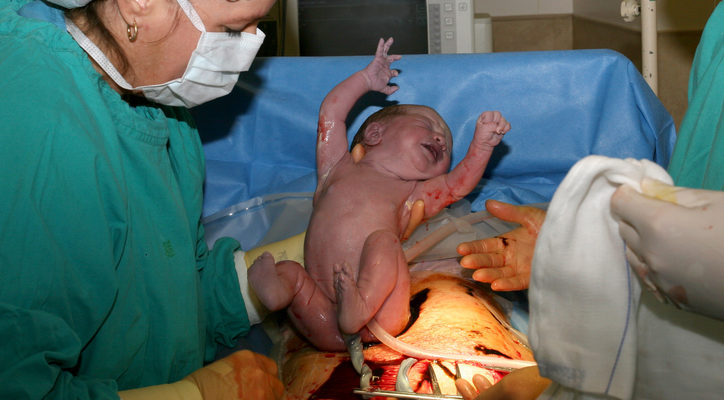
Most women want a natural, smooth delivery without any medical intervention. However, some have to rely on the help of medical equipment for a safe baby.
The forcep and the ventouse are two typical medical tools to aid in the birth process of pregnant women. With aFamilyToday Health, find out the characteristics as well as the advantages and disadvantages of these two types.
What is assisted birth?
A assisted birth is when the fetus needs outside intervention and support with medical instruments that act on the baby's head. 1 out of 8 women need an aid.
What is the forcep clip and ellipse?
The forcep and the oval clip are two tools used for birth support. Which device is used depends on how close to date of birth, the position of the fetus and the difficulty of the delivery.
The forcep clip consists of two metal pieces connected together. There are many types of forcep clips used for different scenarios. This clip is used by the doctor to hold the baby's head by fixing the clamps on the sides of the baby's head and pulling the baby out from the vagina. The oval has one end attached to a suction device and a handle for pulling. The nozzle is designed to fit the baby's head to pull out.
Oval is not recommended if:
The baby is less than 34 weeks, because the fetal skull is too soft to handle with a vacuum;
Baby is lying in reverse position.
Which tool is better?
These two devices have different risks and benefits that a pregnant woman's doctor or midwife will consider when discussing options. Compared with the forcep clamp, the oval is less likely to affect the perineum or vagina, but the oval has the following disadvantages:
Less likely to be successful in helping the baby be born;
It's more likely to cause your baby to have temporary swelling on the scalp (hemorrhage);
Bleeding inside the baby's eye (retinal hemorrhage) is more likely to occur, although this is uncommon.
Compared to the oval, the forcep clip is more likely to be successful in giving birth, but the clamp has the following disadvantages:
Causes mild redness or bruising in the face of a newborn;
Involvement of episiotomy, severe laceration, or both;
Causes significant damage to the perineum and vagina;
Causes long-term uncontrollable problems for you, such as an inability to control your bladder or have bowel movements.
Many people believe that oval is the best option, as it causes less injury to pregnant women and babies. However, for some births, forcep clamp is preferable.
For example, if your child needs to be spawned quickly, a forcep clip is often the better choice. And if the doctor feels unsuccessful using the oval, it is better to use the forcep clamp right away, because successive use of two different instruments can cause more damage.
What happens after using a birth aid?
Most babies recover from birth with the intervention of tools. You may be worried about bruises or bumps on your baby's head, but it's usually a temporary problem that goes away on its own within a week. However, a hematoma can take several weeks to completely go away. If you have any concerns, please consult your doctor or midwife.
In some cases, if the mother is not able to give birth naturally, the use of birth aids is essential. Each device has its own characteristics, so the obstetrician will help the mother find the best method for the safe birth of the baby.












